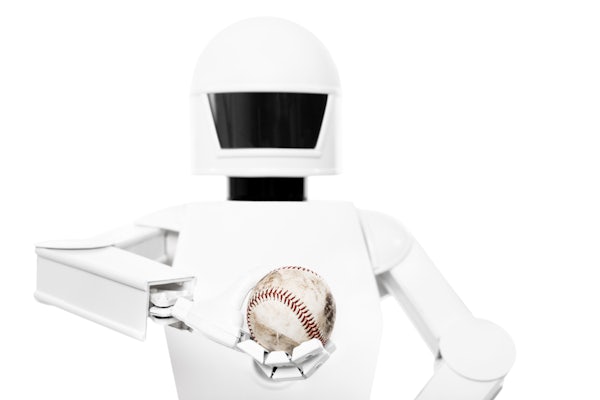AI could transform baseball
A deep neural network model has been shown to boost the effectiveness of average and below average major league pitchers

The old-school hit and run “Whitey ball” era of baseball is long gone. In today’s game, coaches, scouts, front office personnel and players themselves rely heavily on quantitative analytics, which have transformed the sports world over the last decade.
But what if artificial intelligence (AI) could be used to push those gains even further? A computational game-theoretic approach proposed by a faculty member at the McKelvey School of Engineering at Washington University in St. Louis has been shown to boost the effectiveness of average and below-average major league pitchers.
“Essentially, we used a combination of a stochastic (randomly determined) game model and deep neural network learning techniques to compute optimal pitching sequences in a baseball at-bat,” said Yevgeniy Vorobeychik, an associate professor of computer science and engineering and co-author of the paper “Computing an Optimal Pitching Strategy in a Baseball At-Bat,” which he recently presented at the Florida AI Research Society (FLAIRS) conference.
Vorobeychik and his co-authors used deep neural networks to learn how to predict outcomes of pitches whenever a batter swings. They then modeled an at-bat as a stochastic game, which they solved using a method known as value iteration, combined with linear programming, a mathematical modeling technique.
Focusing on data from the 2015-18 Major League Baseball seasons, they determined an approach to each at-bat that actually helped improve the efficacy of average and below-average pitchers.
Key findings of the study include:
- Dynamic games: Vorobeychik and his co-authors developed a dynamic game-theoretic model that takes into account a pitcher’s repertoire and control, and a batter’s patience, or tendency to swing at pitches outside the strike zone, to generate an optimal pitching sequence strategy for each at-bat.
- Data integration: By integrating comprehensive player and game data, including historical performance and pitch tracking, the researchers created a framework capable of generating personalized pitching strategies for individual pitchers against specific batters.
- Performance analysis: The study evaluated the effectiveness of the optimized pitching strategies by comparing them with observed pitching efficacy in the data. The results demonstrated a significant reduction in batter on-base percentage, particularly for lower-ranked pitchers.
“I suspect that essentially all pitchers who make it to the major leagues have great stuff,” Vorobeychik said. “What distinguishes those who are great from those who are merely good is, in part, how they use their arsenal in a game setting, for particular batters. Formally solving this as a game may enable pitchers with less experience or ability to figure out the best pitch sequencing and to better utilize their stuff.”
But can the model be used to help major league pitchers in a game setting?
“I believe so,” Vorobeychik said. “Certainly, there is more work to be done. For example, we assume that each at-bat is independent, which it clearly is not. That is actually something we are working on now.”




